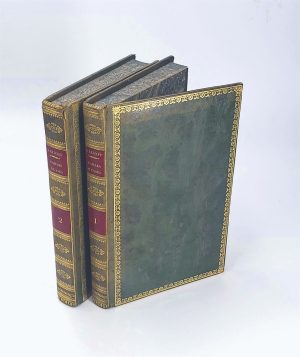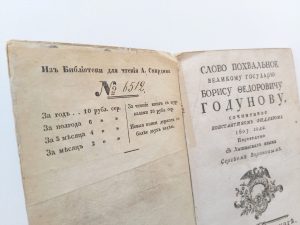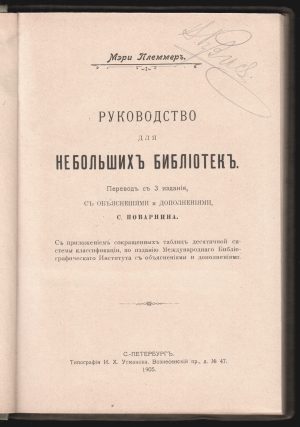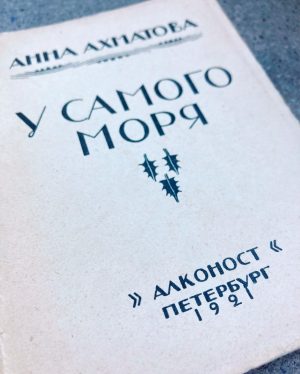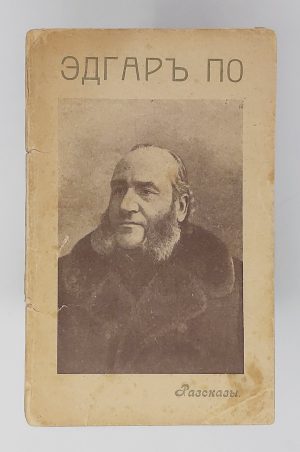Our Notes & References
A landmark edition of Krylov’s celebrated fables: his first book published in Europe*, first Italian translations, and first multilingual translation, uniting three nations in their mutual influence and collaboration.
A publication organised by the Count Orlov, and elegantly produced by Didot, with new types specially cast.
A lovely, unusually fresh example in full green morocco, with the Isabey plates in clean, strong impressions.
The Countess Orlov (Orlova), née Anna Ivanovna Saltykova (1779-1824), had a particular interest in Krylov and began collecting Italian translations during her stay in Italy, with the ultimate aim to publish the ‘Russian La Fontaine’ in Europe. Her untimely death however prevented her to see what her husband would finally carry out: a significant edition of more than 85 original fables by Krylov, all translated and adapted into French and Italian by more than 80 writers, authors, poets and other gens de lettres. Indeed Count Grigorii Vladimirovich Orlov (1777-1826), the youngest son of the famous Orlov brothers, favourites of Empress Catherine the Great, managed to gather an impressive array of personalities, “the most outstanding poets of Italy [and France]”: naturally a relatively large number of aristocrats, but also authors with very different backgrounds, including well-established fabulists, such as Auguste Rigaud, Antoine Le Bailly and Baron de Stassart; many women, with in particular “the first woman to be admitted to the Lyceum des Arts” (Letzter) La Princesse Constance de Salm (1767-1845), the writer Sophie Gay and her daughter Delphine Gay; the dramatist Casimir Delavigne, then at the height of his tremendous popularity; the historian and ambassador to Russia in 1784-89 Le Comte de Ségur – grand-father of the famous Comtesse’s husband; and even the author of “La Marseillaise” Claude Rouget de Lisle. Firmin Didot himself produced a fable too. Italian writers included the poets Antonio Mezzanotte and Pietro (Celestino) Giannone among others, and many contributions were due to the liberal Neapolitan writer and journalist Urbano Lampredi, who was employed by the Orlovs in Paris in the early 1820s.
This wide-ranging European community worked on a rich material, including Krylov’s most famous fables, hailed by Terras as being “among the top achievements of Russian literature”: “Martyshka i ochki” [“Monkey and the Glasses”], “Kvartet” [The Quartet], “Slon i moska” [“The Elephant and the Pug”], “Lebed, Shchiuka i rak” [The Swan, the Pike and the Crayfish] and “Demianova Ukha” [“Demyan’s Fish Soup”] among many others.
Interestingly, many French and Italian ‘translations’ of the Russian fables are rather adaptations, or even sometimes (as indicated on the titles) imitations, significantly differing in length or content. Their authors made them poems of their own, inspired by Krylov’s original but evolving within the context of their own language and culture: for example, one French version quotes Alexis Piron’s Métromanie (1736), absent from Krylov. To illustrate this wealth of inspiration and the possibilities of ‘translation’, some fables have two versions in one language, sometimes very different indeed: “Ruchei” [“The Stream”] for example has two Italian versions, and “Gusi” [“The Geese”], two translations in French, one of which is Rouget de Lisle’s (volume II, p. 90) – who might have sympathised with the subtle revolutionary spirit of Krylov’s fable as he was recently afflicted by the restoration of the monarchy in France: as Smirnov-Sokolskii noticed, “the comprehensive significance of Krylov’s satire applied not only to Russian circumstances and events”.
The work includes extensive introductions: first a letter by Orlov in Russian (with a section title in French) to his “dear friend” Krylov about the outcome of this laborious project; then a long presentation in French by the scholar and politician Pierre-Édouard Lémontey; followed by a discourse in Italian by F. Salfi, one of the translators, about the genre of fables in Italian literature and the importance of mutual influences in European literary traditions through translations. In response to Lémontey’s preface, reprinted the same year in the magazine Syn otechestva [Son of the Fatherland], Aleksandr Pushkin wrote: “I will say that we must thank Count Orlov, who chose a truly popular poet to introduce Europe to the literature of the North. Of course, no Frenchman would dare to rank anyone above La Fontaine, but we seem to prefer Krylov to him. Both will forever remain the favourites of their fellow countrymen […] La Fontaine and Krylov are representatives of both nations’ spirit” (in Smirnov-Sokolskii). Krylov was then at the height of his career: a celebrated national poet, he had become in 1816 librarian of the Imperial Public Library, which he contributed to create, and he received the Russian Academy Golden Medal in 1823.
“The Orlovs’ undertaking was extremely useful in popularising Russian literature, which is the main significance of the Paris edition of Krylov’s fables” (Smirn.-Sok.). It was also noted for its quality: “both parts are printed in the best print shop of Firmin Didot and are really splendidly published” (Smirn.-Sok.). The book is printed on thin vergé paper, with an elegant Cyrillic type specially ordered by Didot, and classical, graceful head- and tailpieces. It includes six plates: five after Jean-Baptiste Isabey, and a portrait of Krylov engraved by Cain after Otto (Ermolai) Esterreich, a Russian artist of Austrian origin.
Vereshchagin noted that “the book is rare”: indeed immediately after publication most copies were sold in Paris and very few were actually brought to Russia.
*Just a couple of fables translated into French had already been published here and there in French almanacs, and Dupré de Saint-Maure included ten in his innovative Anthologie russe in 1823. There was an 1822 Choix des fables de M. Kryloff with almost 70 fables (including some translated by Saint-Maure) – but published in a small print run and in St. Peterburg, this version remained mostly unknown to the European public.
Bibliography
Bychkov O basniakh Krylova v perevodakh, pp.6-12; Fekula 4857 (“Rare” and illustrated; lacking a plate); Gubar 528-529 (illustrated); Obolian. 1391; Quérard, La France littéraire, IV, 318 (“Ce recueil de fables est vraiement une curiosité littéraire [… Il] est le premier et le seul qui offre une variété et une réunion si précieuse de talents distingués”); Smirnov-Sok. 790 and Rasskazy pp. 251-255; Svod. Kat. 1800-1825, 4147; Vereshchagin 414 (“it belongs to the rare ones”); Victor Terras, A History of Russian Literature, p. 138; Letzter, Jacqueline; Adelson, Robert; Adelson, Robert G. (12 August 2001). Women Writing Opera: Creativity and Controversy in the Age of the French Revolution. University of California Press. p. 35; Not in Kilgour (who had an extensive representation of Krylov though).
Physical Description
Two volumes 8vo (21.8 x 13.2 cm). Half-title, titles in Russian and French, engraved portrait frontispiece, LXI, [2] blank, 245, [3] pp.; half-title, titles in Russian and French, 378, [3] pp., with 5 engraved plates, most without lettering, one by Ch. Bayer after Isabey, all protected by tissue guards.
Binding
Partly unopened in contemporary full tree green morocco, floral roll to covers, flat spines gilt in compartments, two red morocco labels lettered in gilt, blue marbled enpapers and edges, blue silk ribbons.
Condition
Bindings minimally rubbed, head of both upper hinges with small tear, spine just a bit faded, small marks of removed paper to upper pastedown of vol 1; very occasional light foxing, in text and tissue guards, a bit more at beginning of both volumes, plates not affected, and most of text brilliantly white, with some introductory leaves unopened.











